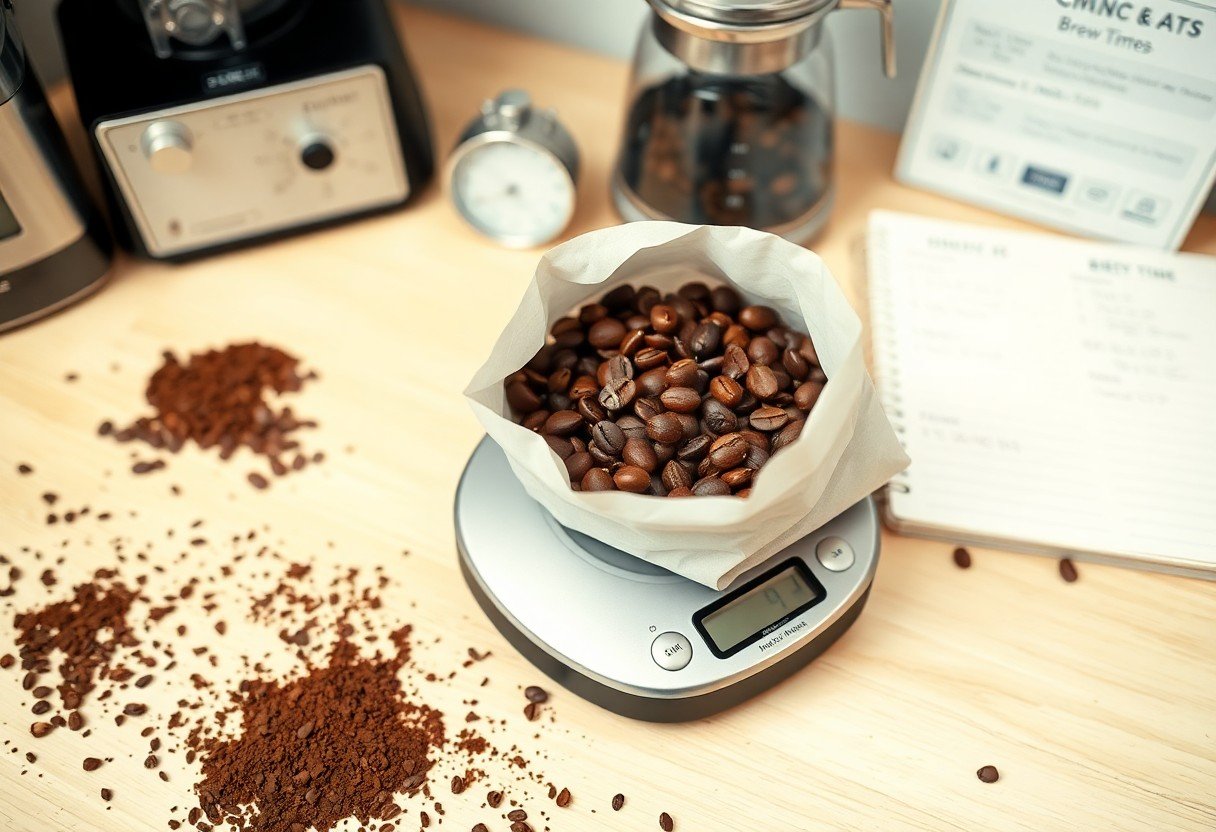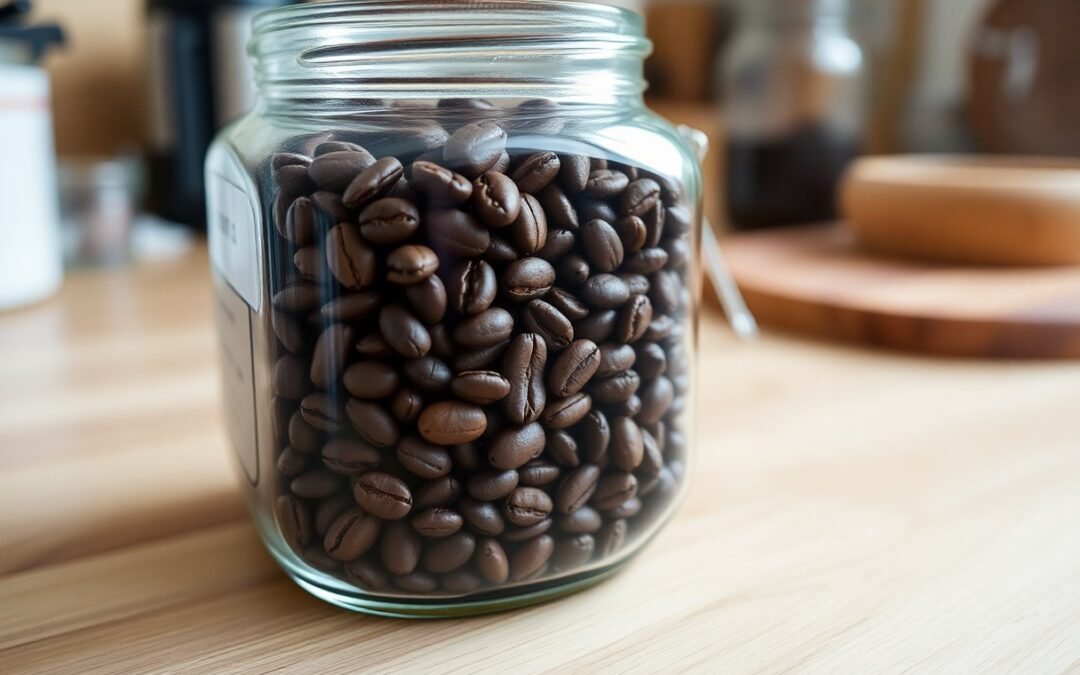Just like any other food item, the freshness of coffee beans directly impacts the flavor and aroma you experience in each cup. Understanding the science behind coffee beans will help you make informed decisions about storage and usage to ensure you enjoy that perfect brew. In this post, you’ll learn how long you can expect your coffee beans to stay fresh, what factors influence their shelf life, and how to properly care for them to maintain their delicious qualities. Get ready to elevate your coffee game!
The Journey from Farm to Cup: What Affects Freshness
The journey of coffee beans from farm to cup is intricate and laden with factors that significantly impact their freshness. From the moment cherries are picked to when they reach your kitchen, each step influences the flavor and aroma you experience. Factors such as harvesting practices, processing methods, and transportation conditions all play a role in preserving the freshness of your coffee beans, ultimately affecting your brewing experience.
Harvesting Practices
Your coffee’s freshness begins at the farm, where harvesting practices can vary significantly. Selective picking, where only ripe cherries are chosen, ensures that beans are collected at their peak flavor potential. In contrast, strip picking, which involves collecting all cherries at once, often results in a mix of unripe and overripe beans, compromising the quality and freshness of the final product.
Processing Methods
The way coffee beans are processed after harvesting plays a major role in their freshness. Methods like the washed (or wet) processing remove the cherry’s outer fruit and mucilage, allowing for quicker drying and reducing the risk of spoilage. On the other hand, natural processing involves drying the cherries whole, which can retain more fruity flavors but may require longer drying times and risk fermentation if not monitored carefully.
In washed processing, the cherries are first pulped, then fermented to remove the sticky mucilage, and finally dried. This method results in a clean flavor profile and reduces the likelihood of off-flavors, making it a popular choice for many specialty coffees. Meanwhile, natural processing captures the unique characteristics of the fruit, leading to a complex taste but demands precise control over drying conditions to avoid undesirable flavors. Both methods drastically influence how long your coffee retains freshness, illustrating the depth of knowledge needed in the journey from farm to cup.
Packaging and Storage: The Unsung Heroes of Freshness
Effective packaging and proper storage play an integral role in maintaining the freshness of coffee beans. Most beans arrive in either vacuum-sealed bags or foil-lined pouches, both designed to limit air and moisture exposure. This is vital because stale beans translate to flat, lackluster coffee. Once you open your bag, how you store your beans will significantly influence their flavor profile and aroma over time.
The Role of Air and Light Exposure
Exposing your coffee to air and light sets off a chain reaction that can ruin its freshness. Oxygen promotes oxidation, leading to off-flavors and a decrease in aroma. Similarly, exposure to light can break down the delicate oils in your coffee that contribute to its flavor. For optimal freshness, keeping beans in an airtight, opaque container can make all the difference.
Ideal Storage Conditions
The best environment for storing your coffee beans combines cool temperatures and low humidity. Aim for a dark, dry place in your kitchen, away from heat sources like ovens or stovetops. Keeping your beans at a consistent temperature—preferably around 60°F (15°C)—while using an airtight container ensures that flavors are preserved, maximizing your coffee enjoyment over a longer period. Avoiding frequent opening of the container can also help maintain an optimal atmospheric balance for your beans.

The Chemistry of Coffee Beans: What Deteriorates Flavor
The flavor profile of your coffee is significantly influenced by the chemistry of the beans themselves. Essential compounds and oils present in coffee contribute to its rich taste and aroma. When these elements are altered or diminished, often through oxidation, exposure to light, heat, or air, the quality of your brew deteriorates. Understanding these chemical changes helps you maintain the best flavor from your beans for as long as possible.
The Impact of Oxidation
Oxidation is a primary factor that deteriorates the flavor of coffee beans. When coffee comes into contact with oxygen, the oils and flavors begin to break down, resulting in stale or sour tastes. This process can start almost immediately after roasting, which is why packaging, storage, and timing are critical in preserving your coffee’s freshness. Taking proper precautions can mitigate these effects and extend the life of your beans.
Retaining Essential Oils and Compounds
Essential oils and compounds in coffee are key players in flavor complexity. As beans age, these oils can evaporate or degrade, reducing the overall taste. The goal is to minimize exposure to elements that facilitate oil deterioration. Using airtight containers, keeping coffee in a cool, dark place, and grinding just before brewing are practices that help preserve these vital components, ensuring a full-bodied cup every time.
By prioritizing the retention of imperative oils and compounds, you can significantly enhance your coffee experience. Instead of storing your beans in a glass jar that allows light penetration, opt for a non-transparent, airtight container. This simple step helps create an environment where those aromatic oils remain intact. Furthermore, breaking down coffee just before brewing sparks freshness, allowing the natural scents and flavors to bloom beautifully in your cup. Each of these strategies conveys a genuine approach to enjoying coffee at its peak, inviting you to savor the rich complexity of flavors much longer.
A Freshness Timeline: How Long Can You Expect Your Beans to Last?
The longevity of coffee beans depends significantly on how they are stored and their type. Generally, whole coffee beans can remain fresh for three to four weeks after being roasted, while ground coffee usually lasts about one to two weeks. The best practice is to consume beans as soon as possible after roasting for an optimal flavor experience. Vacuum-sealed bags and airtight containers can extend freshness by limiting exposure to air and moisture.
Shelf Life of Different Coffee Types
| Type of Coffee | Shelf Life |
| Whole Beans | 3-4 weeks |
| Ground Coffee | 1-2 weeks |
| Instant Coffee | 1-2 years |
| Espresso Beans | 2-3 weeks |
| Decaf Coffee | 2-4 weeks |
Recognizing the differences in shelf life can help you make informed coffee purchases that suit your brewing style. Whole beans offer better preservation of flavor compared to ground options, while instant coffee provides a longer-lasting alternative for convenience.
Signs Your Coffee Has Lost Its Freshness
Detecting stale coffee can save you from a disappointing brew. Stale coffee tends to exhibit a flat or dull aroma, lacking the vibrant notes you expect. If your coffee has taken on an oily sheen or a pungent, rancid smell, it’s likely past its prime. Additionally, your taste buds will signal that something is off; if your once rich and complex cup now tastes sour or bitter, this is a strong indication that freshness has faded.
Beyond just intensity, the overall flavor profile will shift, making your love for coffee feel like a tiring chore rather than a delightful experience. Fresh coffee offers layers of flavor akin to quality wine, while stale coffee often leaves you with a bitter aftertaste or a one-note profile. Don’t hesitate to check your beans; enjoying a home brew should always be thrilling, not disappointing.
Practical Tips for Maintaining Coffee Bean Freshness
Maintaining your coffee bean freshness can enhance your coffee experience significantly. To ensure your beans are enjoyed at their best, consider the following tips:
- Store beans in an airtight container.
- Keep them in a cool, dark place, away from heat and moisture.
- Use whole beans instead of pre-ground coffee.
- Buy in small quantities to reduce the chance of spoilage.
Any deviation from these practices can compromise your coffee’s flavor and aroma.
Best Practices for Home Storage
Using an opaque, airtight container made of glass or ceramic can help prevent light, air, and moisture from affecting your coffee beans. Store this container in a pantry or cupboard, as temperature fluctuations can degrade your beans quickly. Ensure the lid seals tightly to create an optimal environment for storage.
Choosing the Right Coffee for Longevity
Selecting the right type of coffee can also impact longevity. Opting for beans that are roasted recently and have been packaged properly gives you a head start on freshness. Different coffee varieties have varying shelf lives. For instance, lighter roasts tend to retain their flavors longer due to lower levels of oils, while darker roasts may oxidize quicker. Knowing these differences can help guide your purchases for an extended drinkable lifespan.
In addition to roast level, consider the origin of your coffee beans. Some beans, such as those from Central America, are known for their bright flavors that can last longer than other regions. Moreover, specialty coffees often come with specific recommended consumption timelines, which can inform you on when to enjoy them for optimal taste. Understanding the intricacies of your coffee choice is vital for preserving flavor and freshness.
Final Words
To wrap up, understanding the science behind coffee beans can greatly enhance your brewing experience. You should aim to consume your coffee within two to four weeks after roasting for optimal flavor and freshness. Always store your beans in an airtight container in a cool, dark place to preserve their quality longer. By following these guidelines, you’ll be able to savor each cup with the rich, full flavor that only fresh coffee can provide.
Q: What factors affect the freshness of coffee beans?
A: The freshness of coffee beans is influenced by several factors, including the type of bean, roast level, storage method, and exposure to air, moisture, light, and heat. Whole beans generally stay fresh longer than ground coffee because they maintain their natural oils and flavors. The roast level also plays a role, with lighter roasts typically retaining freshness longer than darker roasts. Proper storage in an airtight container and a cool, dark place can significantly extend the lifespan of your coffee beans.
Q: How long can I expect whole coffee beans to stay fresh after roasting?
A: Whole coffee beans can remain fresh for approximately 2 to 4 weeks after roasting, depending on the storage conditions. After this period, the beans may start losing flavor and aroma due to oxidation. However, if stored properly in a vacuum-sealed bag or airtight container in a cool, dark environment, they can maintain a good level of flavor for up to 3 months. For optimal taste, it’s best to consume them within the first few weeks post-roast.
Q: How can I tell if my coffee beans have gone stale?
A: Several indicators can signal that your coffee beans have gone stale. The first is aroma; fresh beans should have a strong, rich smell, while stale beans may smell flat or lack fragrance. Additionally, stale beans may produce a weak or dull taste when brewed, lacking the complexity and depth that fresh beans provide. Visually, stale beans may appear oily or shriveled. If you notice any of these signs, it’s a good indication that your coffee beans may not deliver the desired flavor profile.

